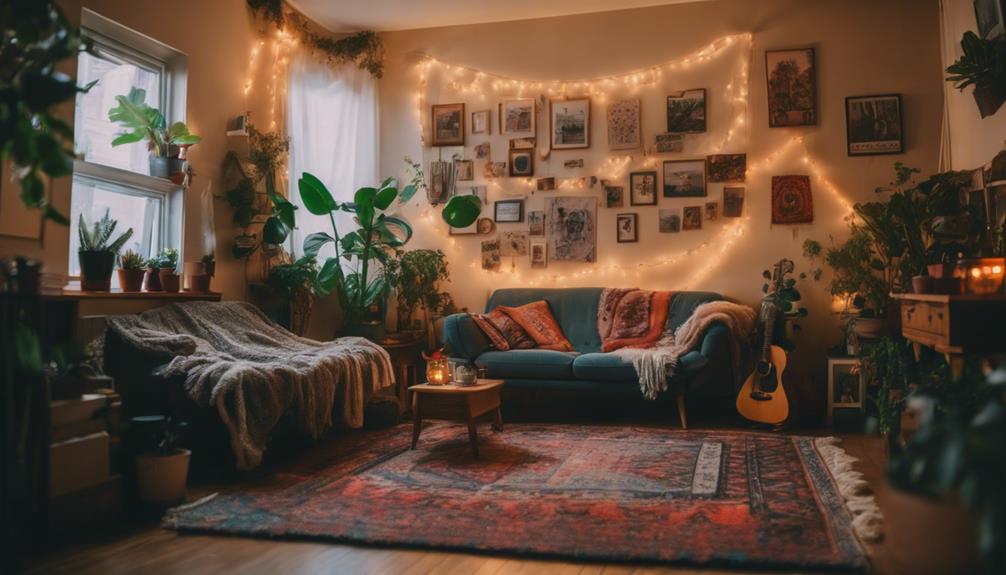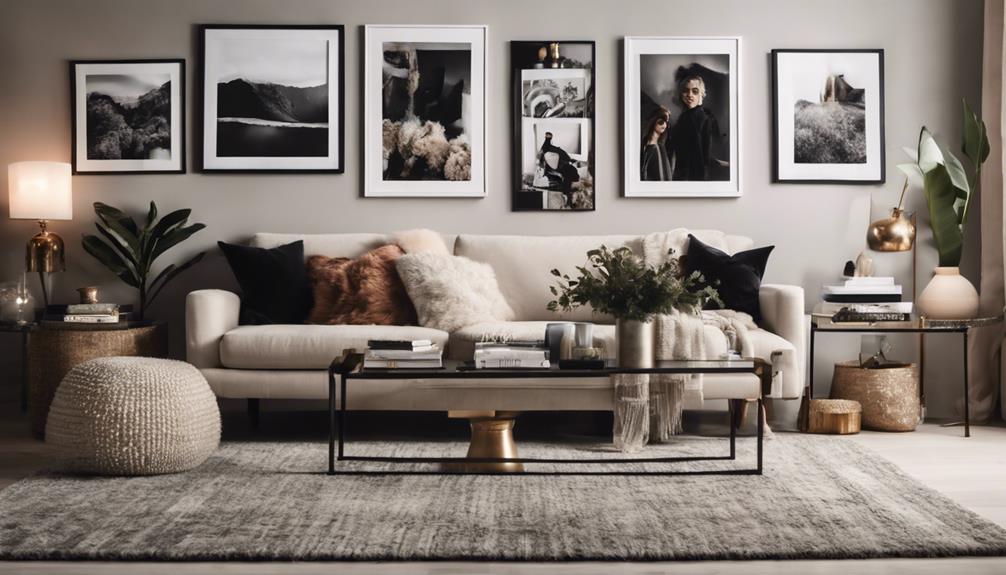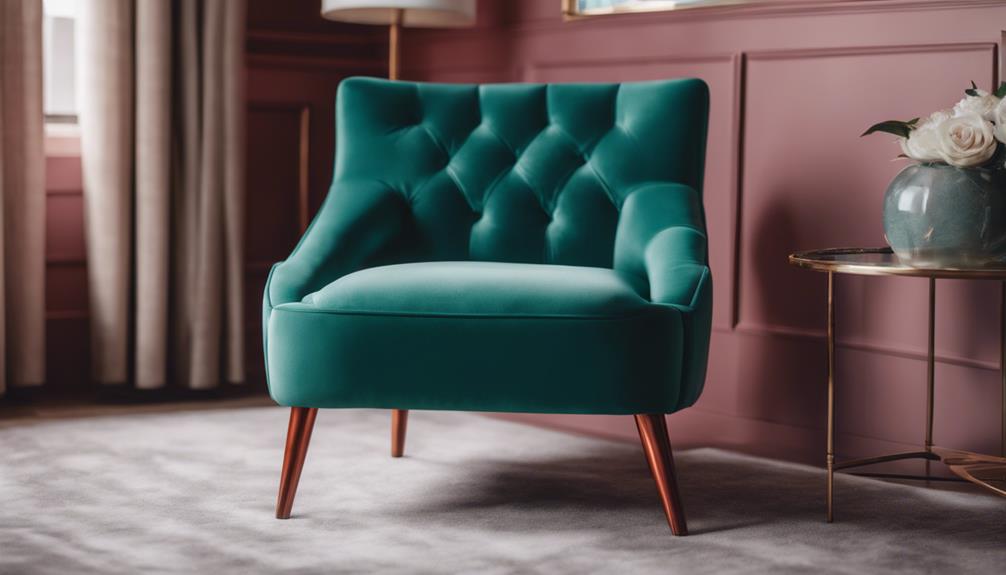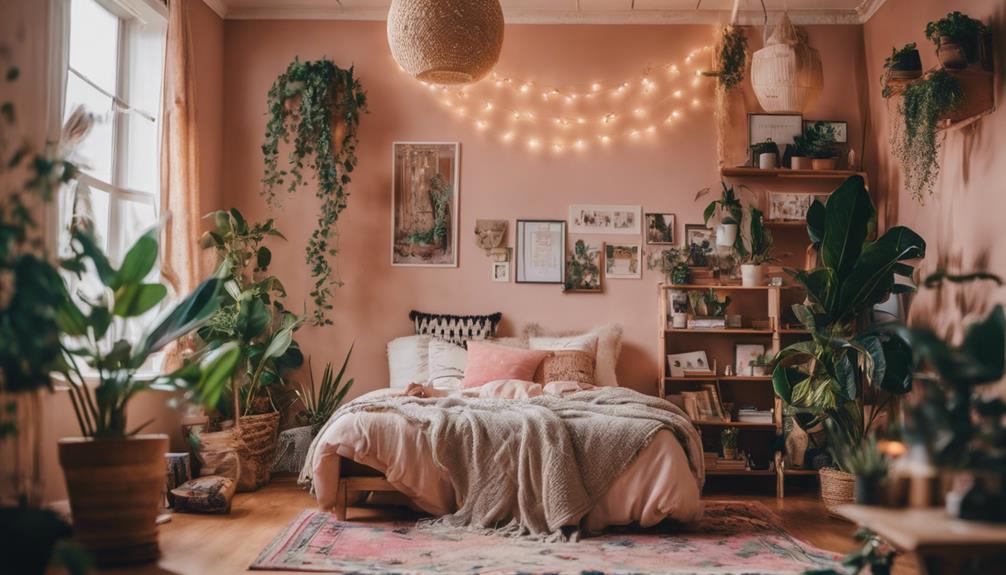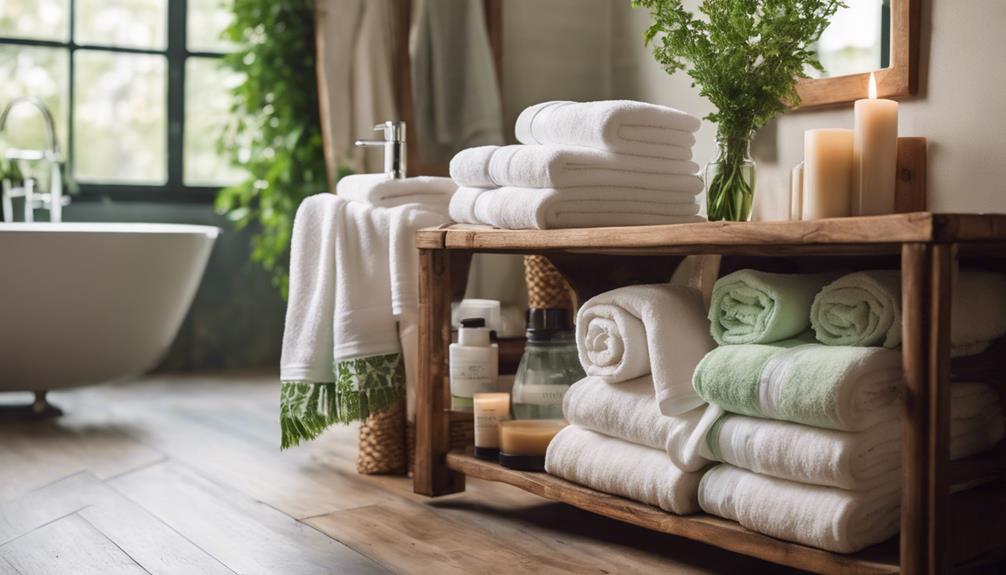Indie room decor lets you express yourself with unique styles that impress. Start with a vibrant color palette to create a nostalgic vibe, mixing bold shades with soft neutrals. Incorporate vintage finds and handmade projects for personalized touches. Layer textures using woven fabrics and reclaimed wood to add warmth. For lighting, opt for Edison bulbs or whimsical string lights to set the mood. Don't forget quirky accessories, like macrame wall hangings or framed vintage posters, to showcase your personality. When you're ready to elevate your space further, you'll discover even more inspiring ideas.
Key Elements
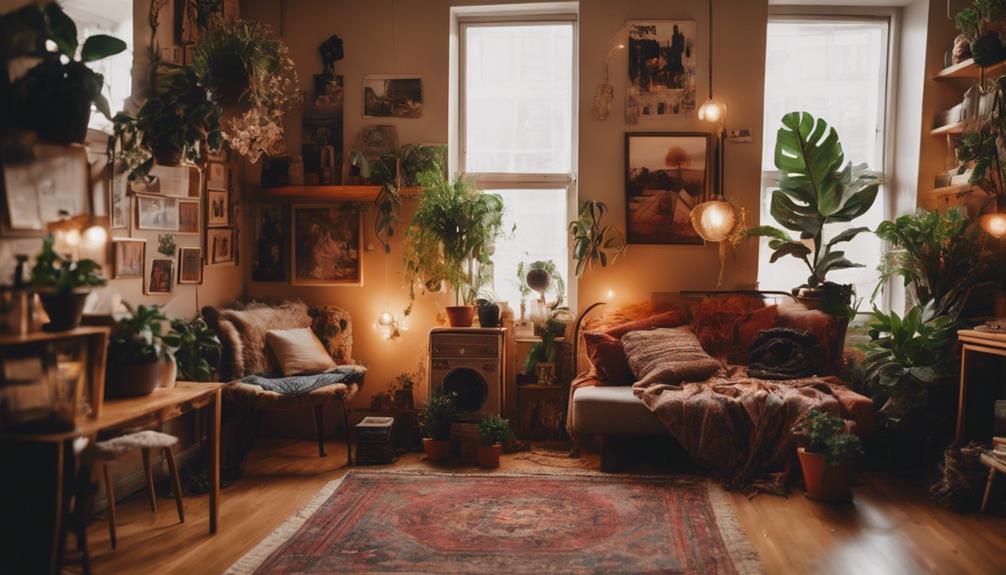
When you're curating your indie room, the color scheme, materials, and textures play an essential role in setting the vibe.
You'll want to mix vibrant hues with varied materials to create a cozy yet dynamic environment.
Emphasizing unique textures adds depth and character, making your space truly your own.
Color Scheme
A vibrant color scheme is essential in indie room decor, incorporating bold tones like pale yellows, greens, and fun oranges to create an energetic atmosphere. The indie aesthetic style thrives on a lively palette, drawing inspiration from 2000s pop culture with colors that evoke nostalgia, reminiscent of TV show title sequences.
To achieve a unique look, don't shy away from mixing and matching diverse shades. This encourages personal expression, allowing you to reflect your personality through your decor. You can also integrate softer, neutral tones to balance the vibrant colors. This interplay not only maintains visual interest but also prevents the space from feeling overwhelming.
Bright and eclectic patterns play a significant role in the indie color scheme. They enhance the character of your space and provide additional layers of creativity. By thoughtfully selecting your color scheme, you can transform your room into a lively environment that impresses everyone.
Embrace the bold and let your space tell your story through vibrant colors and playful patterns that capture the essence of indie decor.
Materials
Incorporating materials like vintage finds and handmade items can elevate your indie room decor, adding unique touches that truly reflect your personal style. Start by sourcing vintage items through thrifting; these pieces serve as eye-catching accents and tell a story. You can mix in plants like succulents and cacti to breathe life into your space, enhancing its overall vibe.
For your wall decor, think outside the box. Use refurbished print media, such as old magazines or posters, to create a personalized gallery wall. This not only adds color but also showcases your interests and creativity. Don't shy away from eclectic decor items like retro books and whimsical accessories; they contribute to a layered look that defines indie aesthetics.
Handmade projects also play a crucial role. Custom wall art or refurbished furniture allows you to express your personality and makes your space truly one-of-a-kind.
Textures
Textures greatly enhance indie room decor, adding depth and inviting warmth through a variety of materials that reflect your unique style. By incorporating woven fabrics, reclaimed wood, and ceramics, you can create a space that feels both cozy and eclectic. Adding textiles with unique patterns, like knitted throws or embroidered pillows, elevates this ambiance.
Mixing smooth surfaces, such as glass or metal decor items, with rough textures—think burlap or distressed furniture—creates a striking contrast that draws the eye. Layering different textures works wonders too; combining faux fur rugs with wooden accents fosters a warm, inviting atmosphere that showcases your personal taste.
Don't overlook the impact of textured wall art. Consider 3D wooden panels or fabric wall hangings as statement pieces that can transform your room's overall aesthetic. These elements not only add visual interest but also help to create a cohesive look that ties your space together.
Essential Fixtures and Furniture
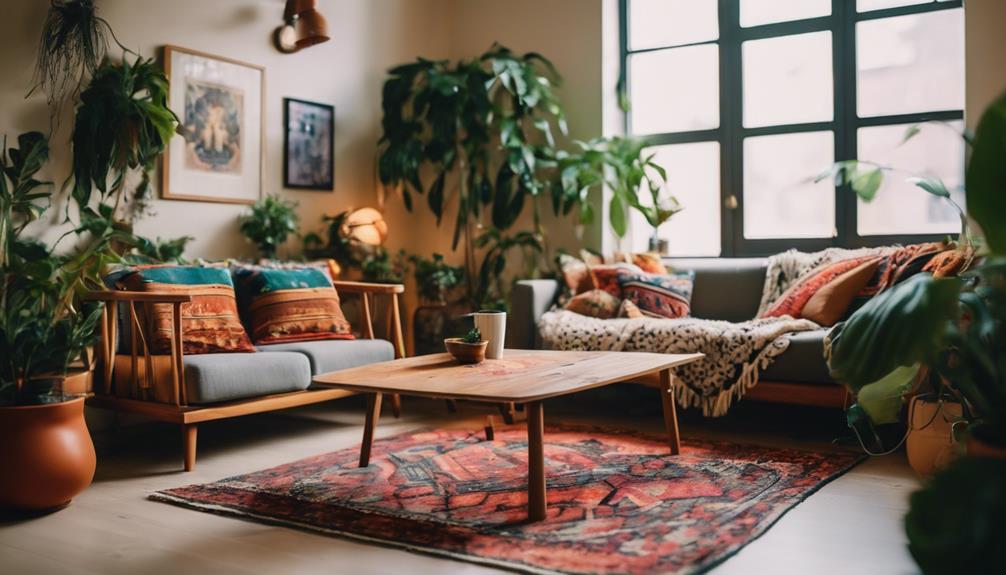
When it comes to essential fixtures and furniture for your indie room, think vintage charm and personality.
A vintage-inspired floor lamp, a retro record player stand, and a hanging macramé plant holder can transform your space into a cozy haven.
Each piece not only serves a purpose but also adds a unique touch that reflects your style.
Vintage-Inspired Floor Lamp
A vintage-inspired floor lamp can instantly elevate your indie decor, serving as both a stunning focal point and a source of warm, inviting light. These lamps often feature unique designs that reflect the elegance of bygone eras, making them perfect decor items for your space. You'll find that many vintage floor lamps are crafted from durable materials like brass or wrought iron, ensuring they're not only beautiful but also built to last.
Characterized by ornate details and retro color palettes, a vintage-inspired floor lamp complements indie aesthetics beautifully. Whether you're looking to enhance the cozy atmosphere of your room or simply want to make a statement, these lamps can do the trick. Pairing them with warm-toned bulbs or decorative lampshades can create an inviting ambiance that draws people in.
Thrifting for vintage floor lamps is a fantastic way to discover rare and unique pieces that add character to your indie space. So, don't hesitate to explore local shops or online marketplaces; you might just find the perfect lamp that ties your decor together while promoting sustainability.
Retro Record Player Stand
Incorporating a retro record player stand not only enhances your indie decor but also provides vital storage for your beloved vinyl collection. This stylish fixture serves as a perfect blend of functionality and aesthetics, allowing you to showcase your records while keeping them organized.
Many stands come equipped with modern features like built-in speakers or Bluetooth connectivity, making them versatile for today's listening experiences.
When selecting a retro record player stand, consider materials like wood, metal, or glass that reflect the vintage charm of mid-century modern decor. The height of the stand is fundamental; it should position your turntable at a comfortable listening level for ideal sound quality.
A well-chosen retro record player stand can become a focal point in your indie aesthetic room decor, drawing attention to your collection and complementing other eclectic elements.
Whether you're hosting friends or simply enjoying music on your own, this standout piece will impress everyone. So, elevate your space by integrating a retro record player stand that captures the essence of your unique style while creating an inviting atmosphere for all music lovers.
Hanging Macramé Plant Holder
Elevating your indie room decor is as simple as hanging a macramé plant holder, which adds a boho touch while showcasing your favorite greenery. These stylish fixtures allow you to display plants without sacrificing precious floor space, making them ideal for any interior design.
With intricate knotting techniques, macramé plant holders come in various sizes, accommodating different pots and plant types, so you can mix and match based on your style.
You can easily DIY your own hanging macramé plant holder using macramé cord, enabling you to personalize colors and designs to fit your unique aesthetic. Hang them near windows to capture natural light, creating a vibrant atmosphere that invites life into your space.
Incorporating these holders not only enhances your indie room decor but also improves indoor air quality as your plants thrive. Plus, they contribute to an eclectic and artistic vibe that perfectly aligns with the indie aesthetic.
Lighting Ideas
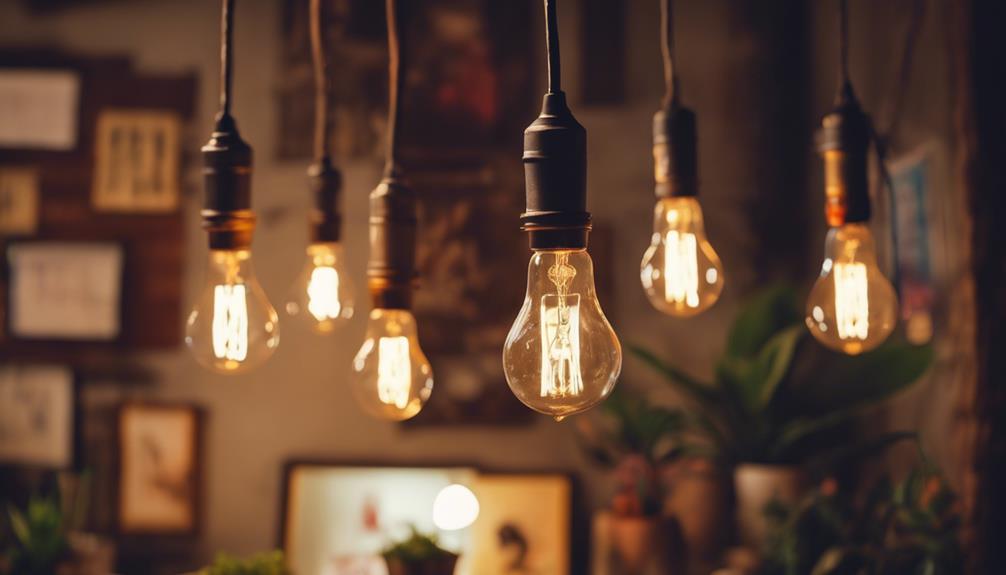
When it comes to lighting, you can really set the mood in your indie space.
Think about incorporating vintage Edison bulb pendant lights for a touch of nostalgia, or string lights with colored bulbs for a playful vibe.
Don't forget to explore geometric floor lamps and neon wall-mounted fixtures to add unique character to your decor.
Vintage Edison Bulb Pendant Lights
Vintage Edison bulb pendant lights instantly create a warm, nostalgic glow that transforms your indie aesthetic space into a cozy retreat. These unique light fixtures not only illuminate your room but also serve as striking wall accents and focal points in your decor. With their exposed filaments and various shapes, they seamlessly blend with other elements of indie decor, enhancing that eclectic vibe you love.
You can choose from energy-efficient LED versions that maintain the vintage charm while cutting down on power consumption. This means you can enjoy the beautiful lighting without the guilt of high energy bills. Plus, many of these bulbs are dimmable, letting you set the perfect mood for any occasion—whether you're hosting friends or enjoying a quiet evening alone.
Consider installing these pendant lights in different arrangements to create a dynamic lighting scheme. Hanging them over a quirky piece of furniture or a vibrant textile can make a statement and elevate your space.
String Lights With Colored Bulbs
If you're looking to add a playful touch to your indie decor, string lights with colored bulbs can transform your space into a whimsical retreat. These lights create a charming atmosphere, enhancing the indie aesthetic in any room. With a wide range of hues available, you can mix and match colors to perfectly align with your home decor theme and personal style.
Consider incorporating string lights around wall art, bookshelves, or windows to add a warm glow and highlight specific areas. This not only makes your space feel cozier but also draws attention to your favorite decor pieces. Plus, many string light options feature energy-efficient LED bulbs, allowing you to enjoy vibrant colors while keeping electricity consumption low.
One of the best things about string lights is their versatility and ease of installation. Whether you want a temporary setup for a gathering or a permanent addition to your decor, these lights fit right in, especially in smaller spaces.
Geometric Floor Lamp Design
Looking for a statement piece that combines style and functionality? Geometric floor lamps offer a striking way to elevate your indie decor while providing essential lighting. With their unique shapes and designs, these lamps feature angular lines and bold patterns that instantly enhance the aesthetic of any room.
You can find geometric floor lamps in various materials, such as metal, wood, and plastic, giving you versatile styling options to match your decor theme. Whether you prefer a vibrant hue or a muted tone, there's a lamp that can complement your color palette perfectly.
Not only do these lamps create visual interest, but they also serve a functional purpose by illuminating specific areas of your space. Many models incorporate energy-efficient LED bulbs, ensuring that you enjoy stylish lighting while remaining eco-conscious.
When choosing the right geometric floor lamp, consider how it will interact with your existing decor. A well-placed lamp can transform your space, making it more inviting and trendy. So, go ahead and make a statement with a geometric floor lamp that reflects your unique style!
Neon Wall-Mounted Light Fixture
How can you instantly elevate your room's vibe? A neon wall-mounted light fixture might be the perfect solution, adding a pop of color and personality to your space. These eye-catching decor elements come in various shapes and bright hues, making it easy to find one that matches your unique style.
Neon lights instantly enhance the indie aesthetic, evoking a nostalgic feel reminiscent of retro signs from the 1980s and 1990s. With energy-efficient LED technology, they provide a long-lasting, environmentally friendly lighting option that doesn't compromise on style.
Plus, many neon wall lights are customizable, allowing you to choose different phrases or designs that reflect your personality. Installation is typically straightforward, with most neon light fixtures designed for easy wall mounting.
This accessibility means you can quickly transform your room's ambiance without the need for professional help. Whether you want to create a cozy reading nook or a vibrant party space, a neon wall-mounted light fixture can be the perfect finishing touch.
Decorative Elements
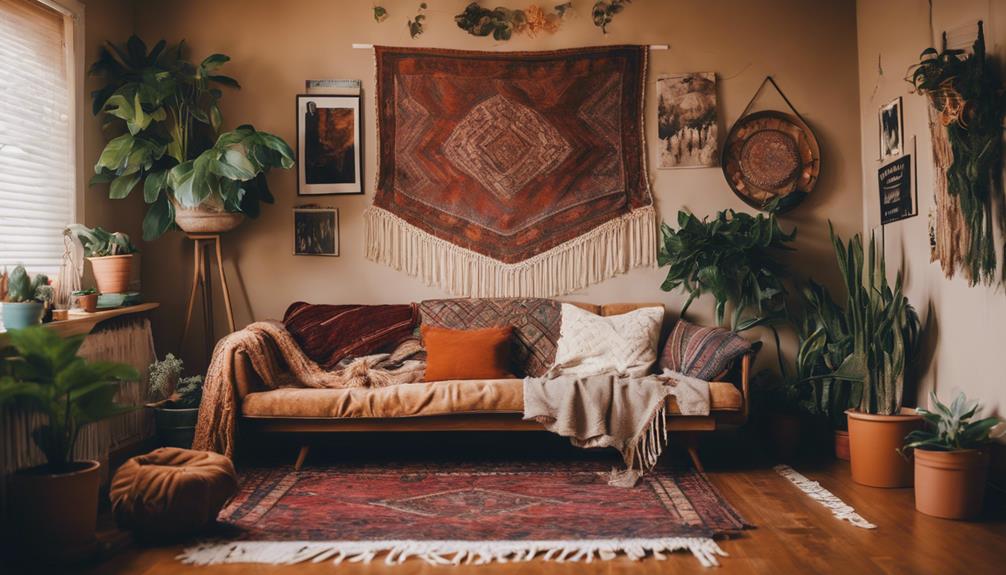
To bring your indie room to life, consider incorporating a vintage globe for an eclectic charm that sparks conversation.
A macrame wall hanging adds texture and bohemian flair, while framed vintage concert posters showcase your musical taste and memories.
These decorative elements not only enhance your space but also reflect your unique personality.
Vintage Globe for Eclectic Charm
A vintage globe instantly transforms your space into an eclectic haven, sparking conversations and showcasing your wanderlust. Adding this striking piece to your decor enhances the indie aesthetic, reflecting your individuality and love for exploration. With various styles available, from mid-century designs to antique finishes, you can easily find a vintage globe that complements your room's theme.
Incorporating a vintage globe doesn't just elevate your decor; it also serves functional purposes. Use it as a centerpiece on your bookshelf, desk, or side table, where it acts as both an educational element and a unique accessory. Guests will be captivated by its charm, making it a perfect conversation starter.
Thrifting for vintage globes can be an exciting treasure hunt. You might stumble upon one-of-a-kind finds that add a personal touch to your space. Each globe tells a story, inviting you to share your adventures and aspirations with others.
Macrame Wall Hanging
Macrame wall hangings add a unique texture and artistic flair to your space, making them an ideal choice for infusing depth into your indie-inspired decor. These decorative elements are crafted using intricate knotting techniques, allowing you to showcase stunning designs that catch the eye.
Often made from natural materials like cotton or jute, they resonate perfectly with the indie aesthetic, emphasizing organic and earthy tones. You can find macrame wall hangings in various sizes, from small pieces that complement a gallery wall to large statement hangings that serve as focal points in your living room or bedroom.
By incorporating these textured elements, you enhance the cozy atmosphere of your home, contributing to that inviting bohemian vibe. If you're feeling creative, consider diving into DIY macrame projects. Not only do they offer a fun way to express your artistic side, but they also allow you to personalize your space with handmade art.
Whether you buy or create your own, macrame wall hangings can transform your decor, making your indie aesthetic truly shine.
Framed Vintage Concert Posters
Framed vintage concert posters bring a splash of nostalgia and personality to your space, showcasing iconic artists and memorable events that spark conversation. These eye-catching decorative elements are perfect for anyone looking to enhance their indie aesthetic. You can find these posters at thrift stores, online marketplaces, or specialty shops, often at budget-friendly prices, making them accessible to all.
When displayed in eclectic frames or grouped together, framed vintage concert posters create a dynamic gallery wall that reflects your personal taste and musical influences. The vibrant colors and unique typography of these posters add character and vibrancy to your room, turning a plain wall into a stunning focal point.
Incorporating these posters also connects to the DIY ethos of the indie aesthetic, allowing you to curate a style that truly represents your love for music and art.
Whether you're a fan of classic rock, punk, or indie bands, adding framed vintage concert posters to your decor not only showcases your interests but also transforms your space into a vibrant celebration of creativity and individuality.
Flooring
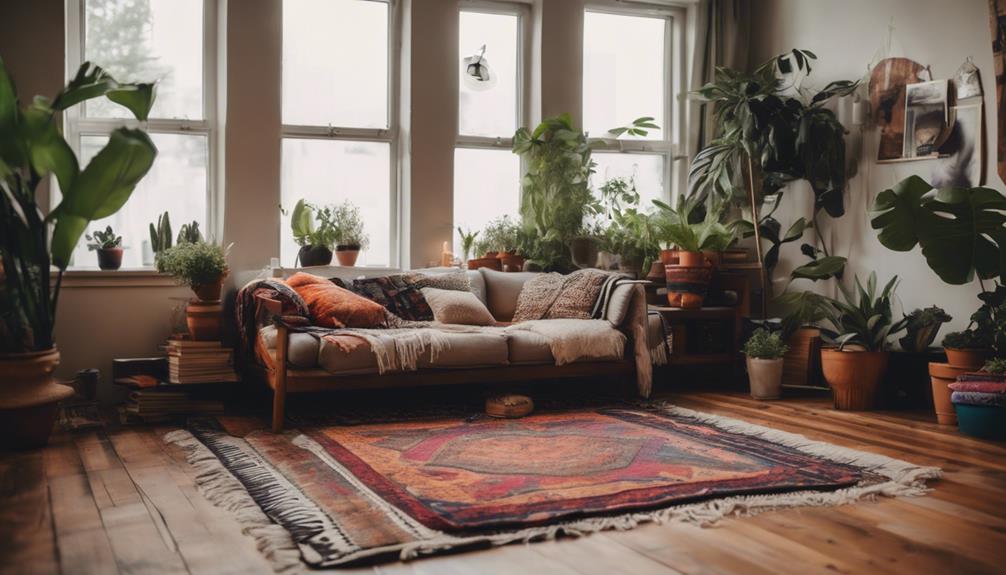
When it comes to flooring for your indie room, choosing reclaimed wood floor panels can instantly warm up the space and add character.
Textured area rugs are perfect for defining areas and bringing in vibrant colors, while cork flooring offers a cozy feel underfoot.
Each option enhances your room's unique vibe and comfort, so consider what speaks to your style.
Reclaimed Wood Floor Panels
Transform your space with reclaimed wood floor panels, which not only enhance your room's character but also promote eco-friendliness. Sourced from salvaged timber, these panels are a sustainable flooring option that reduces waste while adding to your home's unique charm.
The indie aesthetic thrives on individuality, and reclaimed wood offers unique textures and colors that create a rustic yet trendy ambiance.
When you choose reclaimed wood, you're not just making a stylish choice; you're also improving indoor air quality since it's generally free from harmful chemicals found in new flooring materials. Whether you're a DIY enthusiast or prefer a professional installation, you'll find options that suit your skill level and vision.
Incorporating reclaimed wood flooring not only emphasizes your connection to nature but also makes a statement about your commitment to sustainability. As you walk across these beautifully aged panels, you'll feel the warmth and character they bring to your space.
Textured Area Rugs
Reclaimed wood floor panels set the stage for your decor, making textured area rugs the perfect addition to enhance warmth and depth in your indie-themed space. These rugs contribute markedly to the indie aesthetic by adding layers of comfort and visual interest.
You'll find options like braided, knitted, and faux fur rugs that align beautifully with the eclectic style you're aiming for. When choosing textured area rugs, consider their size and unique patterns to fit your room's dimensions and personal taste.
Whether you want a bold geometric design or a subtle, organic print, there's something for everyone. Textured rugs also help define different areas within an open space, creating cozy nooks for relaxation or socializing.
Beyond their visual appeal, these rugs offer practical benefits, such as sound absorption and a non-slip surface for safety. So, when you're looking to complete your indie decor, don't overlook the impact of a well-chosen textured area rug.
It'll not only elevate your space but also impress everyone who steps inside!
Cork Flooring for Warmth
Cork flooring offers an inviting warmth and comfort that perfectly complements your indie room's cozy vibe. This eco-friendly flooring option is made from the bark of cork oak trees, allowing you to decorate sustainably while enjoying the unique benefits it provides. The soft surface of cork is pleasant to walk on, making it ideal for those lazy days spent lounging at home.
One of the standout features of cork flooring is its natural insulating properties. It helps maintain a comfortable temperature in your space, reducing energy costs and providing sound insulation as well. Plus, its resistance to mold and mildew makes it a health-conscious choice for anyone sensitive to allergens or living in humid environments.
Available in various colors and patterns, cork flooring can easily enhance your room's aesthetic, especially if you love incorporating psychedelic colors into your decor. By choosing this unique flooring option, you can create a personalized and stylish atmosphere that reflects your indie sensibilities while ensuring warmth and comfort throughout your space.
Conclusion
Incorporating indie room decor into your space is all about embracing creativity and personal style.
By mixing unique fixtures, trendy lighting, and eye-catching decorative elements, you can transform any room into a vibrant reflection of who you are.
Don't forget about the flooring; it plays an essential role in setting the mood.
With these ideas, you're sure to impress everyone who steps into your space.
So go ahead, let your imagination run wild and create a home that's uniquely you!
